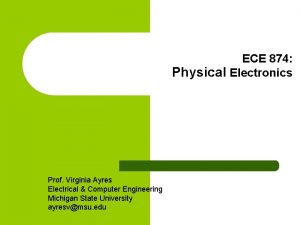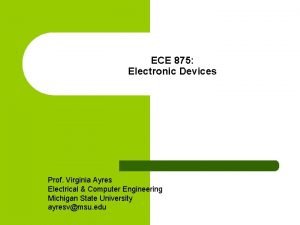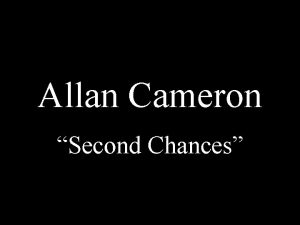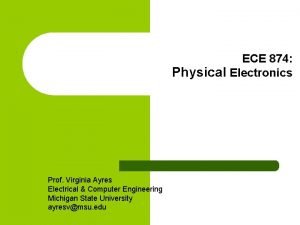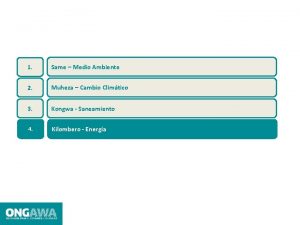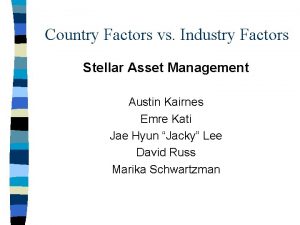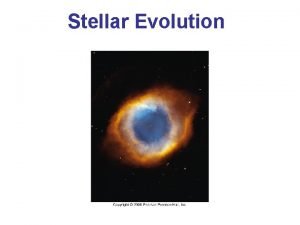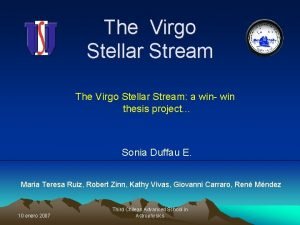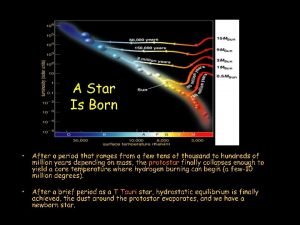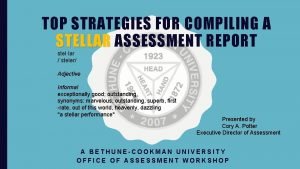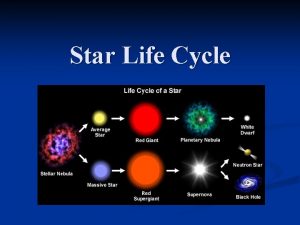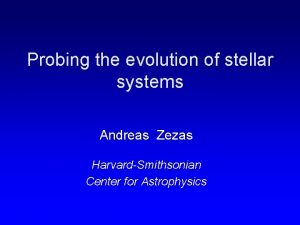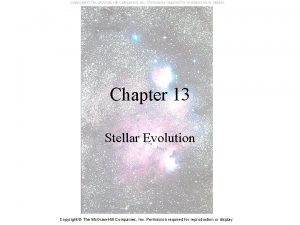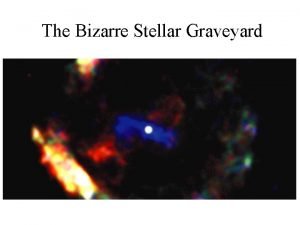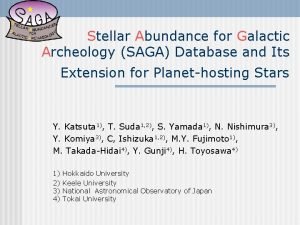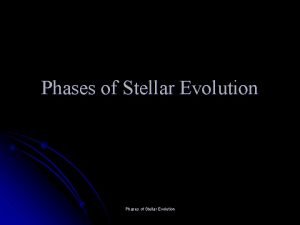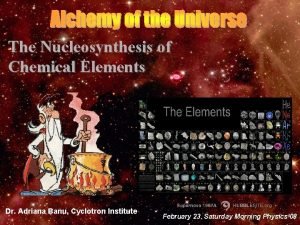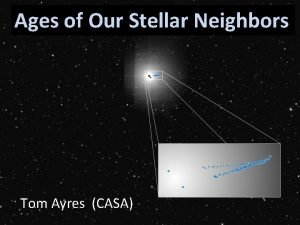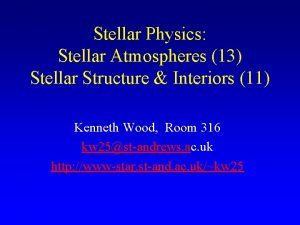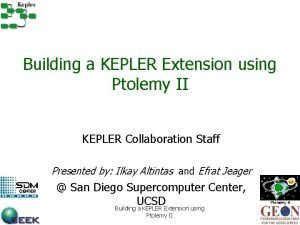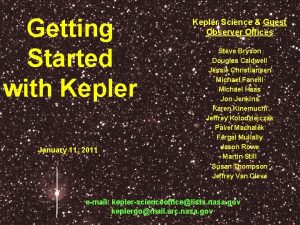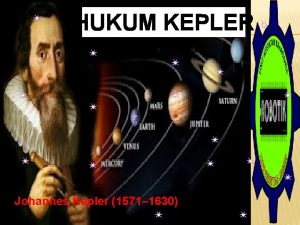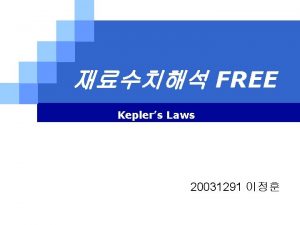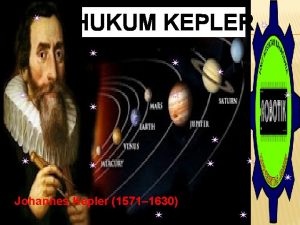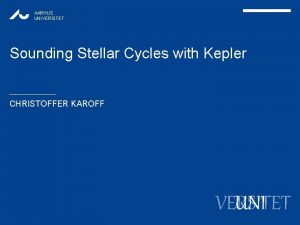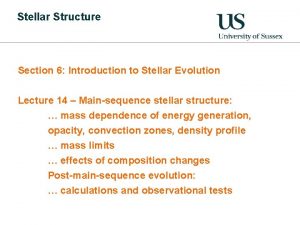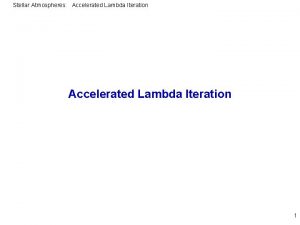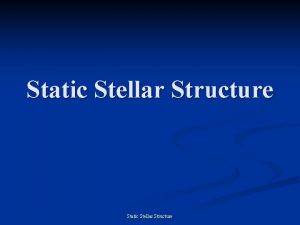Stellar Activity in the Kepler Era Tom Ayres




























- Slides: 28

Stellar Activity in the Kepler Era Tom Ayres (CASA)

Activity XXXXX Talk deals with lower rungs of Drake’s Ladder, where, sadly, sexiness is low, but on positive side, knowledge content is high Note that main focus of Kepler mission is much higher on ladder!

Outline • What is “Activity? ” (Sun-like stars) • Stellar Cycles & Irradiances • Spots & Rotation (A. Brown: Fri; Meibom: Tues; Garcia: Fri; Soderblom: Wed [flares]) • Seismology (T. Brown: Thur [LCOGT]) Guiding question: Is Sun ‘normal’ in cosmic scheme of things?

Solar Activity Solar minimum at left; maximum at right; dramatic changes in sunspot counts over 11 yr cycle

Sunspots are regions of multikilogauss magnetic fields

Sunspot numbers vary (erratically) over 11 -yr period, with polarity reversals over 22 -yr Hale cycle, and migrate from high latitudes to low (“butterfly diagram”)

Surface magnetic activity strongly influences solar outer atmosphere, including 1 MK corona

Fe XII l 195 (1 MK) coronal emission persists at spot minimum (left ; max at right). ‘Fuzzy ball’ devolves from magnetic carpet: small clumps of flux built by local dynamo, independent of deep seated el jefe dynamo responsible for sunspots and their decadal cycling: lack of spots doesn’t mean lack of activity

Activity H-R Diagram Activity appears confined to ‘cool stars’, in convective half of H-R diagram Not coincidence! Originally thought to signal lack of acoustic energy, but dynamo needs convection too (and rotation)

Stellar Activity Cycles Long term Ca II emissions of nearby field star closely mimic Sun’s cycle. Visible brightness changes of Sun only few millimags, in positive correlation with sunspots (Radick, Lockwood, Skiff, & Baliunas 1998)

More examples (from SSS: Hall et al. 2008)

Most late-type stars of near-solar color show long term variations in Ca II emission, many cyclic. Others, typically low RHK and often subgiants, are ‘flat activity’ (Radick et al. 1998)

Solar variations on long (and short) timescales fall close to stars of similar activity (Radick et al. ’ 98; Lockwood et al. 2007)

Case Study: Alpha Cen AB Alpha Centauri triple system. Two solar-like stars about 20 au apart (Sun-Uranus); dim red dwarf 10, 000 au away Slightly metal rich compared with Sun, slightly older by ~1 Gyr. G 2 V primary (“A”) is near twin of our own star

In 2005, XMM reported complete disappearance of Alpha Cen A corona. Since ‘ 00 Alpha Cen orbital separation closing rapidly: no longer easily resolvable by XMM, still trivial for Chandra. HRC campaign (since Oct ‘ 05) captures both stars.

Coronal histories: A=blue B=red Sun=black (yellow: Cyc 21 -23 shifted in time); bottom panel: Chandra (dots) & XMM (shaded, scaled). B has ~8 yr cycle, rising to new max. No clear period for A, modest cycle depth (‘flat activity’ star? )

Rotation-Age-Activity Connection ’Skumanich laws’ confirm importance of dynamo, creating high levels of activity in fast rotating stars, but also root of magnetic braking, which ultimately quenches activity.

Week in life of Sun as seen by SDO/HMI. Sunspot passages create dimmings in visible light curves, but surrounding plage regions cause overall increase in irradiance.

Kepler can measure rotation periods, diff rotation, and photometric changes associated with starspot evolution…trick is to disentangle latter two effects.

Evolution of sunspot fields often accompanied by significant super-rotational motions

Starspot modeling for two Kepler objects

Key issue in contemporary solar physics: “flux emergence”…will be tricky for Kepler to make any progress in this area.

What about seismology? Here are 1 -min measurements from Virgo instrument on SOHO (vs. ~50 mmag changes seen in spotted stars).

Asteroseismology Impact • Mode frequencies sensitive to magnetic structure: cycle induced frequency shifts? (Garcia et al. 2010, Science, Co. Rot) • Rotation/differential rotation from mode splittings (Karnoff et al. 2009, MNRAS) • Convection zone depth (ibid); age (Mathur) • Highly demanding on precision of acoustic frequencies; requires bright stars; Sun in the “sour spot”

GONG Solar torsional oscillations; equatorial branch originates several yrs before appearance of first sunspots of new cycle; Cycle 25? ?

Measurements of large scale coronal topology using green line (forbidden iron); “rush to the poles” seen in previous cycles is late or absent.

Left: Mean field strength of sunspots, and temperature contrast, declining: all this together suggests approaching Maunder minimum? Right: solar oxygen in trouble too

Conclusions Kepler will make fundamental contributions to the understanding of stellar activity by exploiting two complementary aspects of the precision photometry: spot modulations (surface activity, rotation & diff rotation, flares) and asteroseismology (rotation, diff rotation [? ], internal structure, age, cycles). A third possibility – correlations of luminosity with spottedness – will be possible if absolute accuracy is achieved.
 Ayres
Ayres Poziomy integracji sensorycznej
Poziomy integracji sensorycznej Virginia ayres
Virginia ayres Rusty and the ayers rockettes
Rusty and the ayers rockettes Virginia ayres
Virginia ayres Jean ayres
Jean ayres Natasha ayres
Natasha ayres Ayres
Ayres Tenaculum forceps uses
Tenaculum forceps uses Ayres locales
Ayres locales Tomtom go 910 update
Tomtom go 910 update Symbols in the devil and tom walker
Symbols in the devil and tom walker Victorian era vs elizabethan era
Victorian era vs elizabethan era Era uma estrela tão alta era uma estrela tão fria
Era uma estrela tão alta era uma estrela tão fria Creí que era una aventura y en realidad era la vida
Creí que era una aventura y en realidad era la vida Baroque music quiz
Baroque music quiz Stellar asset management
Stellar asset management Stellar evolution
Stellar evolution Virgo stellar stream
Virgo stellar stream Stellar evolution
Stellar evolution Stellar assessment
Stellar assessment Stellar evolution diagram
Stellar evolution diagram Stellar
Stellar Stellar evolution
Stellar evolution Stellar graveyard
Stellar graveyard Stellar wifi
Stellar wifi Stellar saga
Stellar saga Zero age main sequence
Zero age main sequence Becquerel
Becquerel
